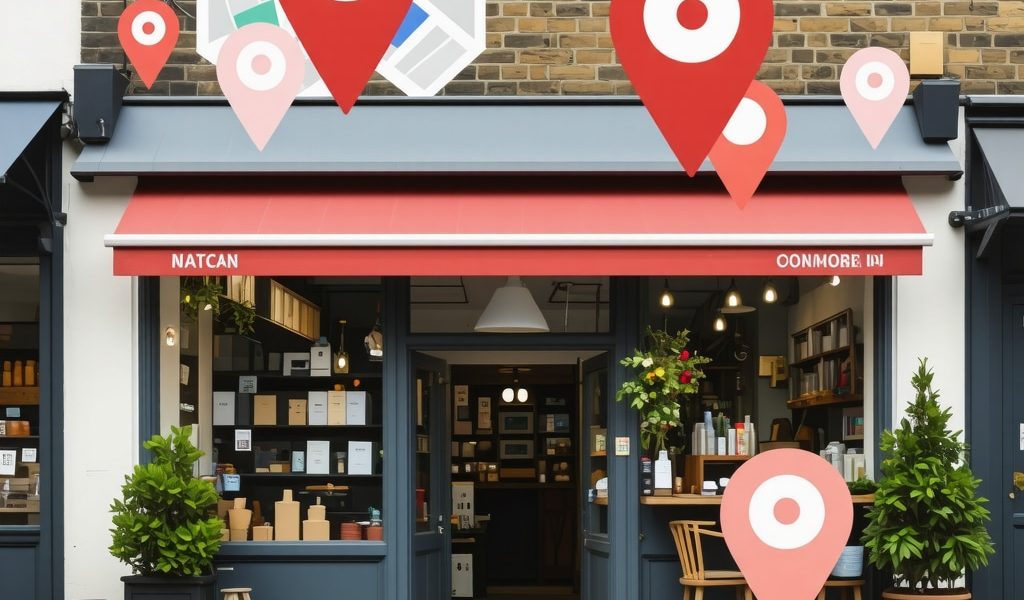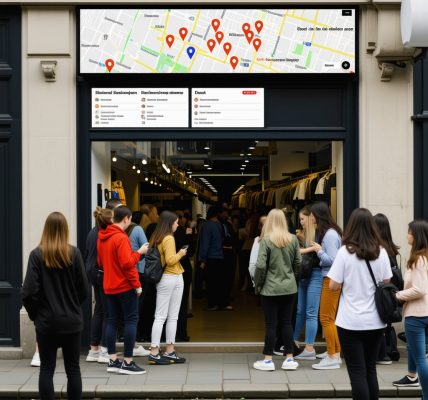Unlocking the Power of Your Google Maps Listing: Beyond Basic Setup
Maximizing local visibility on Google Maps is no longer just about listing your business; it’s about strategically optimizing every element of your Google Maps presence to capture targeted local traffic and convert it into loyal customers. In an era where 46% of all Google searches are local, mastering this optimization can significantly elevate your business profile and revenue streams. This guide dives deep into expert techniques that transcend the basics, revealing how to harness Google Maps listing effectively for true local dominance.
Crafting a Magnetic Google Business Profile That Resonates Locally
At the heart of your Google Maps success lies a meticulously crafted Google Business Profile (GBP). This means curating your business name, categories, and especially the business description with strategic keywords that reflect your local audience’s search intent. For instance, instead of generic terms, integrate geo-specific phrases like “best coffee shop in downtown Seattle” or “affordable plumbing services near me.” This semantic approach aligns your listing with relevant queries, boosting your visibility in local packs.
Moreover, adding detailed attributes and services can further refine your profile’s relevance. Regularly updating your profile with posts about local events or promotions also signals activity to Google’s algorithms, enhancing your local search rankings. Learn more about crafting targeted descriptions.
Visual Storytelling: Why Photo Optimization Elevates Your Google Maps Ranking
Images are powerful trust builders and engagement drivers. Optimizing your Google Maps listing photos with descriptive filenames and geo-tagged metadata can amplify your local SEO efforts. Photos that showcase your storefront, products, or team in authentic settings provide social proof and invite user interaction.
According to Search Engine Journal, businesses with optimized photos receive 42% more requests for directions and 35% more clicks through to their websites. This demonstrates how visual assets directly impact user behavior and Google’s local ranking signals.
How Can Local Reviews and Engagement Propel Your Google Maps Visibility?
Customer reviews are arguably the most influential factor for local SEO success on Google Maps. Beyond just accumulating reviews, engaging authentically with reviewers by responding thoughtfully cultivates trust and signals active management to Google. Prioritize soliciting reviews from satisfied customers right after service delivery to capture timely, genuine feedback.
Furthermore, leveraging Google Posts as micro-updates about offers or news keeps your audience engaged and frequently returns signals to Google’s local algorithms. This dynamic interaction can substantially enhance your listing’s prominence and customer conversion rates. For actionable tactics, explore our guide on GMB review generation best practices.
Building Local Authority Through Strategic Citations and Backlinks
Local citations and backlinks remain foundational to Google Maps ranking. Consistency in your NAP (Name, Address, Phone number) across authoritative local directories and niche-specific platforms reinforces your business legitimacy. Additionally, acquiring backlinks from reputable local blogs, news sites, or industry portals amplifies your domain authority and local relevance.
Employing citation management services or backlink strategies tailored for local SEO can expedite your path to the coveted local 3-pack positions. This multilayered approach, combined with on-profile optimization, produces a synergy that elevates your Google Maps listing beyond competitors. Discover proven backlink building methods.
Engage and Expand: Leveraging Insights and Continual Optimization
Google My Business Insights provide invaluable data about how users find and interact with your listing. Monitoring metrics such as search queries, customer actions, and popular times empowers you to tailor your optimization strategies dynamically. For example, if data reveals peak customer engagement during certain hours, you might schedule posts or promotions accordingly.
Regular audits to update your listing, refresh photos, and optimize keywords ensure that your Google Maps presence remains current and competitive in an ever-evolving local search landscape. These ongoing efforts are crucial for sustaining and growing your local visibility effectively. Learn how to conduct effective GMB SEO audits.
Ready to Elevate Your Local Presence? Share Your Experiences or Ask Experts!
Optimizing your Google Maps listing for maximum local visibility is a dynamic process that combines strategic content, engagement, and authoritative signals. Have you implemented any unique tactics that boosted your local rankings? Share your insights in the comments or explore more expert strategies to refine your approach further. Dive deeper into mastering your Google Business SEO with our comprehensive resources here.
Deepening Engagement with Google Posts and Q&A
One thing I discovered through hands-on experience is that Google Posts and the Q&A section on your Google Business Profile are goldmines for engagement—often overlooked by many local businesses. When I started actively posting weekly updates about new products, special event announcements, or even local community involvement, I noticed a tangible uptick in profile visits and direct inquiries. It’s like giving your audience a reason to keep coming back and a fresh narrative that Google picks up as signals of relevance and activity.
Equally important is managing the Q&A section. Answering common questions proactively not only helps potential customers but also improves your listing’s keyword footprint. Think of it as a mini FAQ that tailors your content to what your customers genuinely want to know. This tactic complements traditional review management and boosts your overall engagement metrics.
How Do You Tailor Google Maps Optimization to Your Unique Business Needs?
This question kept popping up for me as I dug deeper into local SEO. Not every business thrives using a one-size-fits-all approach. For example, a boutique law firm’s optimization strategy will differ significantly from a neighborhood café. The key lies in understanding your niche’s specific search behavior and customer journey. Using tools like Google Keyword Planner can help uncover the exact local phrases your target customers use, which you can then incorporate into your business description and posts.
Moreover, analyzing the Google My Business Insights data becomes indispensable here. You can identify which queries lead users to your profile, the actions users take, and even geographic hotspots generating the most traffic. This level of insight allows you to customize your strategy with precision, whether that means focusing on certain services or adjusting your profile’s content to appeal more to your most engaged audience segments.
Leveraging Third-Party Tools and Services for Local SEO Success
In my journey, I found that while the Google Business Profile dashboard offers useful native tools, integrating third-party solutions can exponentially improve your local SEO outcomes. For instance, citation management platforms help maintain NAP consistency across numerous directories, which is essential for local ranking. Similarly, specialized backlink building services tailored for Google Maps SEO can speed up your authority-building process.
One reliable resource I often recommend is Moz Local, known for its effective citation management and local listing synchronization. Integrating such tools into your workflow reduces manual errors and frees up time to focus on content creation and customer engagement. Learn more about Moz Local for citation boosting.
Why Is Continuous Testing and Adaptation Crucial in Google Maps SEO?
Local SEO isn’t a set-it-and-forget-it deal. I discovered that frequent testing and tweaking are critical to keeping your Google Maps listing competitive. For example, experimenting with different keywords in your business description or varying your Google Posts content can reveal what resonates best with your audience and the search algorithms.
Also, monitoring competitors’ strategies provides useful benchmarks. Tools that track local rankings and citations allow you to spot emerging trends or shifts in consumer behavior early, so you can pivot your strategy accordingly. This iterative approach ensures you remain visible and relevant as the local search landscape evolves.
Engage with the Community: Your Turn to Share!
Have you tried unique Google Maps optimization tactics or tools that transformed your local business visibility? What challenges did you face, and how did you overcome them? I invite you to share your stories and questions in the comments below—because learning from real-world experiences is invaluable. For those eager to dive even deeper, explore expert strategies on mastering your Google Business SEO and elevate your local presence like never before.
Harnessing User-Generated Content: Transforming Customer Interactions into SEO Gold
User-generated content (UGC) extends beyond reviews and Q&As—it encompasses photos, videos, and even customer-submitted posts or check-ins on your Google Business Profile. This rich, authentic content not only bolsters social proof but also provides fresh, keyword-rich material that Google’s algorithms reward for relevance and activity.
Encouraging customers to share their experiences with location-tagged photos or to contribute questions and answers fosters a vibrant digital ecosystem around your business. Strategically prompting UGC through incentives or social media campaigns can enhance listing engagement metrics significantly. According to BrightLocal’s 2023 Local Consumer Review Survey, businesses that actively leverage UGC see a 31% increase in customer trust and a 27% uplift in local search visibility.
How Can Behavioral Signals from Google Maps Users Influence Your Local SEO?
Behavioral signals, such as click-through rates, direction requests, and call actions from your Google Maps listing, serve as critical engagement indicators for Google’s ranking algorithms. These metrics reveal the quality and relevance of your listing in satisfying user intent.
Optimizing for these actions involves clear calls to action, accurate business hours, and seamless mobile responsiveness. For example, integrating booking or inquiry buttons directly within your profile can boost user interaction rates. Moreover, tailoring Google Posts to highlight time-sensitive promotions or local events encourages immediate engagement, amplifying these behavioral signals.
Advanced tracking tools can help dissect these interactions, enabling you to refine your strategies dynamically. By aligning your optimization efforts with the behavioral patterns of your local audience, you can substantially enhance your Google Maps visibility and conversion potential.
Leveraging Localized Schema Markup for Enhanced Google Maps Integration
Schema markup, particularly LocalBusiness schema with geo-coordinates and service area specifications, provides search engines with structured data that clarifies your business details. Implementing precise schema on your website supports your Google Business Profile by reinforcing location relevance and service offerings.
This technical layer facilitates rich snippets, such as displaying ratings or operational hours directly in search results, which can increase click-through rates. For businesses serving multiple localities, incorporating multiple serviceArea entries ensures your listing appears in diversified local searches.
Experts recommend validating schema markup using tools like Google’s Rich Results Test to ensure accurate implementation. This synergy between website SEO and Google Maps listing positions your business as a local authority, enhancing trust and search prominence.
Crafting Multi-Location Strategies: Tailoring Google Maps Optimization for Scalable Local Presence
For businesses with multiple locations, a one-size-fits-all Google Maps optimization approach falls short. Each location demands a customized profile that reflects its unique community, services, and customer feedback. Localized content, photos, and posts tailored to neighborhood-specific events and vernacular significantly impact local search relevance.
Moreover, consolidating insights across locations enables identification of high-performing areas and reveals opportunities for cross-promotion or targeted advertising. Utilizing centralized management tools streamlines updates while preserving individual location authenticity.
Implementing location-specific citation and backlink strategies further reinforces each profile’s authority. By combining granular local insights with scalable management, businesses can dominate multiple local markets efficiently.
Ready to Deepen Your Google Maps Mastery? Engage with Our Expert Community!
Optimizing your Google Maps presence through advanced tactics like UGC mobilization, behavioral signal analysis, and schema markup integration can catapult your local visibility. Have you applied these sophisticated strategies or encountered challenges in multi-location management? Share your experiences or pose questions to our experts in the comments below. For a comprehensive dive into these advanced topics, explore our detailed guides here.
Decoding Behavioral Signals: The Invisible Drivers of Local Ranking
Google’s local search algorithms increasingly prioritize behavioral signals—such as click-through rates, requests for directions, and direct calls—as proxies for user satisfaction and listing relevance. These engagement metrics serve as pivotal ranking factors that can differentiate your Google Maps listing in competitive local markets.
To effectively leverage these signals, businesses must optimize their profiles with crystal-clear calls to action and ensure seamless mobile responsiveness. Incorporating features like in-profile booking buttons or inquiry forms encourages immediate interaction, thereby amplifying key behavioral metrics. Additionally, crafting Google Posts tailored to timely promotions or hyper-local events stimulates repeat engagement and enhances your listing’s algorithmic appeal.
Advanced analytics tools enable granular tracking of these interactions, offering actionable insights to refine your optimization strategy dynamically. By aligning your efforts with authentic user behavior patterns, you can markedly boost both your visibility and conversion rates on Google Maps.
How Do Behavioral Signals from Google Maps Users Influence Your Local SEO?
Behavioral signals provide Google with real-world evidence of your listing’s effectiveness in satisfying searcher intent. Higher engagement rates translate into stronger trust signals and improved local rankings. Businesses that proactively optimize for these signals—through accurate business hours, mobile-optimized profiles, and interactive features—often see sustained ranking improvements and increased customer inquiries.
Integrating Localized Schema Markup: A Technical Edge for Enhanced Search Presence
Implementing LocalBusiness schema markup with precise geo-coordinates, service areas, and operational details offers search engines explicit context about your business. This structured data not only supports your Google Business Profile by reinforcing location relevance but also enables rich snippets—such as star ratings and hours—to appear in search results, increasing click-through rates.
For enterprises serving multiple localities, utilizing multiple serviceArea entries ensures broader visibility across distinct geographic segments. Validating your schema implementation using tools like Google’s Rich Results Test is a best practice to guarantee accuracy and effectiveness.
According to Google’s official documentation on LocalBusiness schema, precise markup significantly enhances your chances of appearing in enhanced search features, which dramatically improve your local search prominence.
Scaling Success with Multi-Location Optimization: Tailoring Strategies for Diverse Communities
Businesses operating across multiple locations face the challenge of balancing brand consistency with local relevance. Creating unique Google Business Profiles for each location, enriched with neighborhood-specific content, photos, and customer feedback, is crucial to resonate authentically with local audiences.
Centralized management platforms enable streamlined updates while preserving each location’s distinct identity. Furthermore, deploying tailored citation and backlink campaigns per location strengthens individual profiles’ authority and local search performance.
By synthesizing granular data across locations, businesses can identify high-impact areas for cross-promotional campaigns and strategic resource allocation, fostering scalable local dominance.
Invitation to Innovate: Share Your Advanced Google Maps SEO Experiences
Delving into complex facets like behavioral analytics, schema markup, and multi-location management can redefine your Google Maps optimization journey. What sophisticated tactics have you employed to harness these elements? Encounter any nuanced challenges or breakthroughs? Engage with our expert community by sharing your insights and questions below.
For an in-depth exploration of these advanced optimization strategies, visit our comprehensive resource hub here and transform your local presence with cutting-edge expertise.
Frequently Asked Questions (FAQ)
What are the most critical elements to optimize in a Google Business Profile for local SEO?
The most critical elements include a precise and keyword-rich business name, accurate categories that reflect your services, a detailed and localized business description incorporating geo-specific keywords, consistent NAP (Name, Address, Phone number) data, and regularly updated photos and posts. These elements collectively enhance your relevance and visibility within local search results.
How do behavioral signals from Google Maps users influence my local search ranking?
Behavioral signals such as click-through rates, requests for directions, phone calls, and website visits indicate to Google how users interact with your listing. High engagement rates demonstrate relevance and user satisfaction, positively impacting your local ranking. Optimizing your profile for these actions through clear calls to action and mobile-friendly features can boost these signals effectively.
Can user-generated content (UGC) really improve my Google Maps visibility?
Yes, UGC like customer photos, reviews, Q&A contributions, and check-ins provide fresh, authentic content that signals activity and trustworthiness to Google. Encouraging customers to submit location-tagged photos or participate in Q&A enhances engagement metrics and keyword diversity, leading to improved local search performance.
Why is schema markup important for Google Maps optimization?
Schema markup, especially LocalBusiness schema with geo-coordinates and service areas, helps search engines understand your business details in a structured format. This can enable rich snippets in search results, such as ratings and operational hours, increasing click-through rates and reinforcing local relevance. Proper implementation also supports multi-location visibility and complements your Google Business Profile.
How should multi-location businesses approach Google Maps optimization?
Each location should have a unique and locally tailored Google Business Profile reflecting its specific neighborhood, services, and customer feedback. Centralized management tools can streamline updates while preserving local authenticity. Additionally, location-specific citation and backlink strategies further reinforce each profile’s authority and improve local rankings across diverse markets.
What role do Google Posts and the Q&A section play in local SEO?
Google Posts provide a dynamic way to share timely updates, promotions, or local event information that signals activity to Google’s algorithms. The Q&A section allows proactive engagement with potential customers, addressing common questions and adding keyword-rich content. Both features enhance user interaction and contribute positive signals for local ranking.
Are third-party tools necessary for effective Google Maps SEO?
While Google Business Profile offers essential native tools, third-party platforms like Moz Local or citation management services help maintain NAP consistency, manage citations across directories, and build authoritative backlinks. These tools automate routine tasks, reduce errors, and enable more strategic focus on content and engagement, accelerating local SEO success.
How often should I update my Google Maps listing to maintain good rankings?
Continuous optimization is crucial. Regularly updating photos, refreshing business descriptions with relevant keywords, posting timely Google Posts, and monitoring customer reviews maintains profile freshness and signals ongoing activity to Google. Frequent audits and adaptation based on insights ensure your listing stays competitive in evolving local search landscapes.
What metrics should I track to measure the effectiveness of my Google Maps optimization?
Key metrics include search queries leading to your profile, user actions such as calls, direction requests, and website visits, engagement with Google Posts and Q&A, review volume and sentiment, and changes in local ranking positions. Google My Business Insights and third-party analytics tools provide valuable data to inform and refine your strategy.
How do local citations and backlinks impact my Google Maps ranking?
Consistent citations across authoritative directories reinforce business legitimacy and NAP accuracy, crucial for local ranking. Backlinks from reputable local blogs, news sites, and industry portals enhance domain authority and relevance. Together, they strengthen your profile’s credibility and improve chances of appearing in the coveted local 3-pack.
Trusted External Sources
Google’s Official Local Business Schema Documentation – Provides authoritative guidance on implementing structured data for local businesses, essential for enhancing search result features and supporting Google Business Profiles.
https://developers.google.com/search/docs/appearance/structured-data/local-business
BrightLocal’s Local Consumer Review Survey – Offers in-depth research on the impact of user-generated content and reviews on local consumer trust and search visibility, grounding optimization tactics in consumer behavior data.
https://www.brightlocal.com/research/local-consumer-review-survey/
Search Engine Journal’s Google My Business Photo Optimization Guide – Delivers practical insights on optimizing images for local SEO, emphasizing the role of visuals in boosting engagement and ranking.
https://www.searchenginejournal.com/google-my-business-photo-optimization/
Moz Local – A leading platform for citation management and local listing consistency, highly regarded for streamlining local SEO efforts and improving citation accuracy.
https://moz.com/products/local
Google My Business Help Center – The official resource for all Google Business Profile features, updates, and best practices, ensuring accuracy and alignment with Google’s latest standards.
https://support.google.com/business/
Conclusion
Mastering Google Maps optimization demands a strategic, multifaceted approach that goes beyond mere listing creation. By meticulously crafting your Google Business Profile with localized keywords, optimizing visual content, fostering authentic user engagement through reviews and UGC, and leveraging structured data like schema markup, you position your business as a trusted local authority. Behavioral signals and continuous adaptation based on insightful analytics further refine your visibility and conversion potential. For multi-location enterprises, tailored, neighborhood-specific profiles and citation strategies ensure scalable success across diverse markets. Embracing advanced tools and proactive community interaction solidifies your competitive edge in the dynamic local search ecosystem. Begin applying these expert strategies today to elevate your local presence, and don’t hesitate to share your experiences or explore further expert content to stay at the forefront of Google Maps SEO excellence.



